Annelies Judson explores the Wellington edition of Books Alive, the schools programme that accompanies the NZCYA awards.
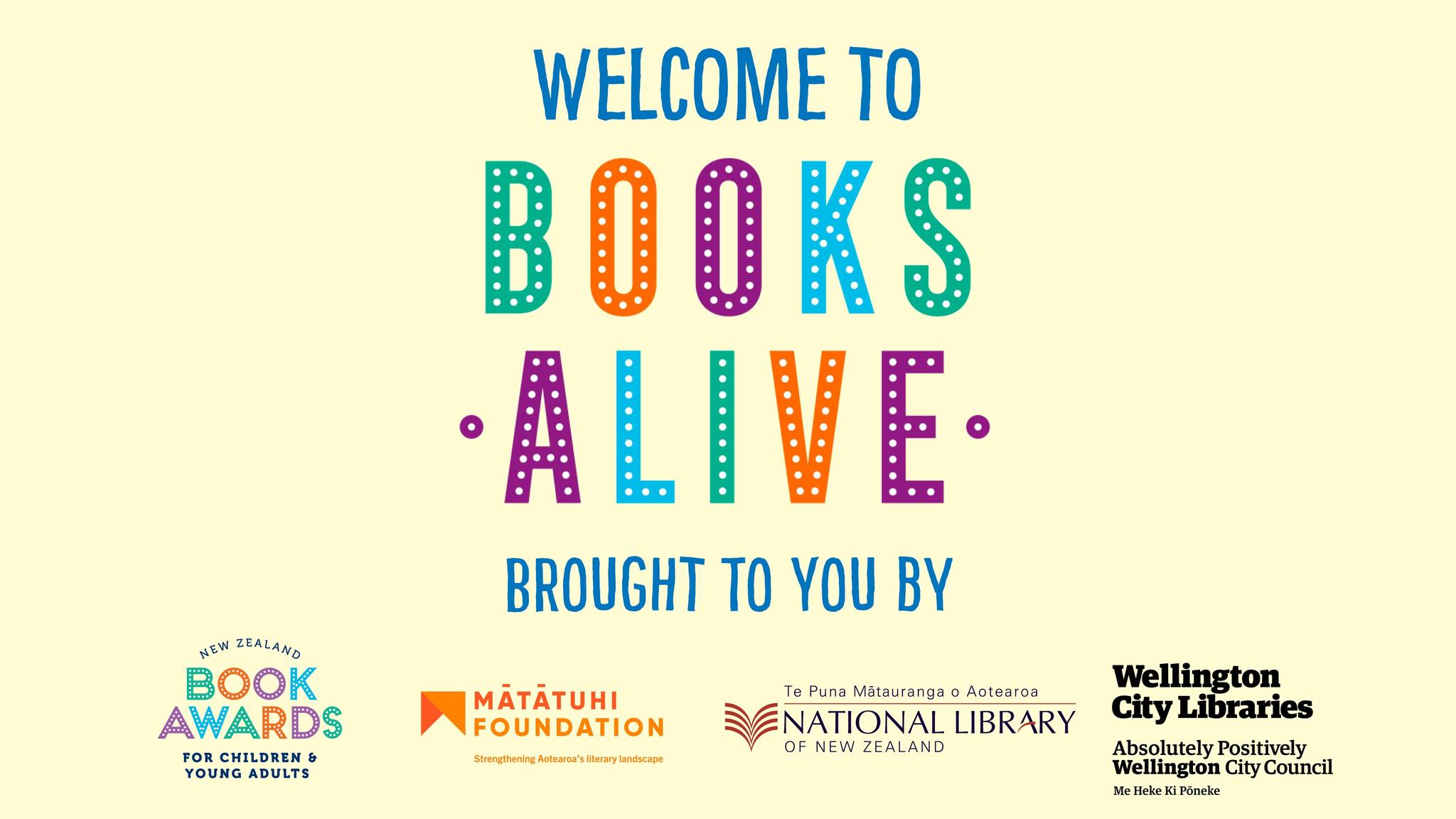
It’s a beautiful morning in the capital and lines of children, like wriggling eels, are making their way into the National Library. Once inside, they coalesce into a tightly-packed ocean of small bodies. They are ready to be entertained and inspired, to write and be read to, to immerse themselves in a world filled with some of Aotearoa’s best children’s books.
This is Books Alive.
Books Alive is the schools programme that runs alongside the New Zealand Book Awards for Children and Young Adults. A group of illustrators and authors from amongst the finalists are brought together to run a day of workshops, talks and group activities. For the first time this year, funding allowed for a Books Alive event in Waihōpai–Invercargill, alongside those already running in Ōtautahi-Christchurch and Pōneke-Wellington.
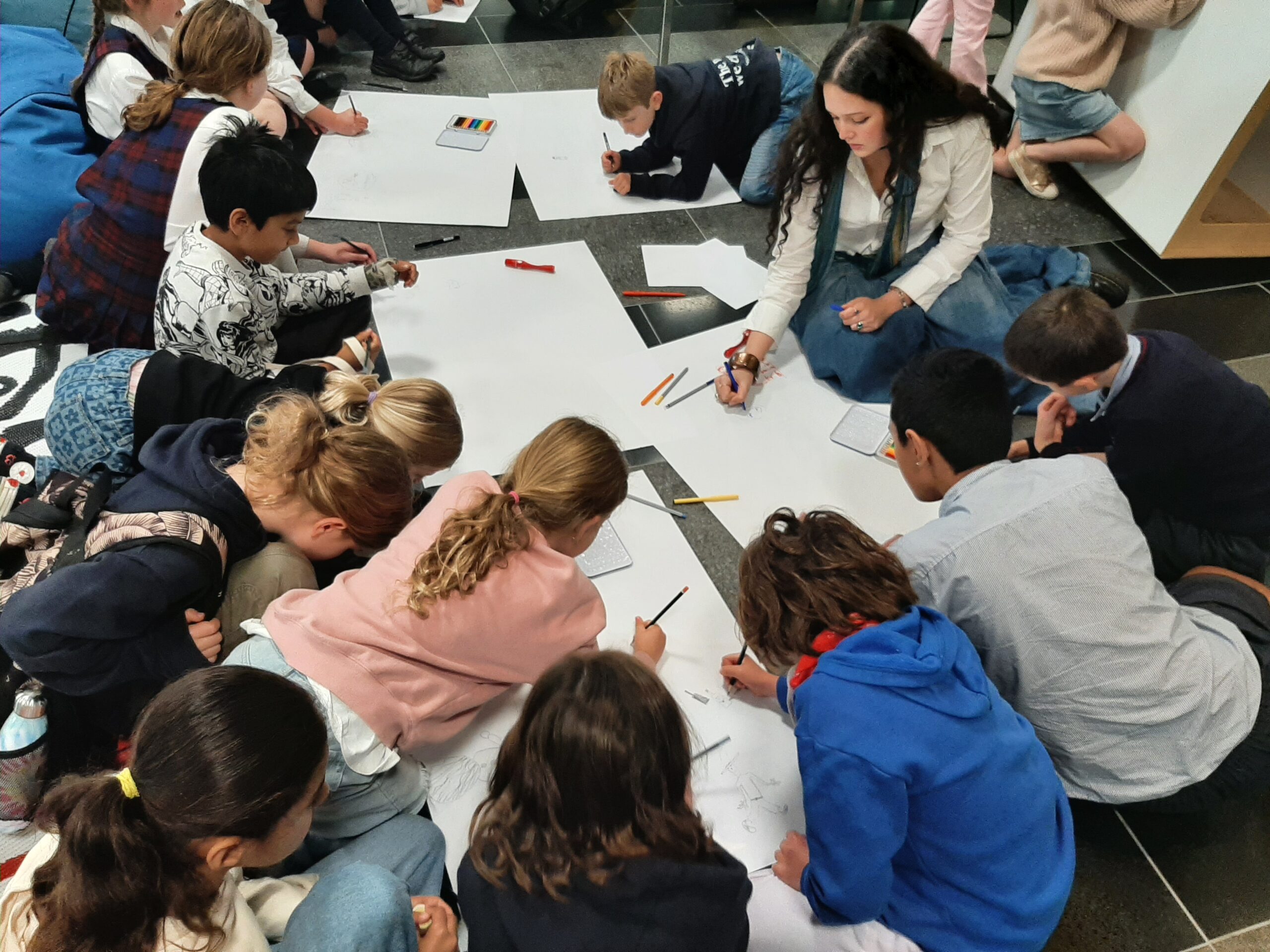
As with many activities involving groups of children, what looks at first like chaos quickly descends into calm and order once the programme starts. Tucked away into the various rooms of the National Library are people ranging from writer Tessa Duder, who first came to the awards in 1981, to debut illustrator Zak Ātea.
In the auditorium, groups of three authors at a time gave “Lightning Talks”—short slots for illustrators or writers to talk about their book, followed by Q&A sessions from the audience. Everyone approached this differently. Michaela Keeble discussed how her son (and co-writer) was the kind of kid who wanted to question tikanga, and how that became the inspiration for Paku Manu Ariki Whakatakapōkai. Tessa Duder talked about her interest in historical fiction as a background to The Sparrow. Rachael King gave a short history of her love of horses, which led into a discussion about the folkloric Scottish kelpie that underpins The Grimmelings. And Ruth Paul, who had some extra time in her session, finished her discussion of her nominated title Hatch and Match and then brought up a group of audience members to act out her book The Animal Undie Ball, which has just been rereleased for its twentieth anniversary—complete with over-the-top dress up underwear and animal hats.
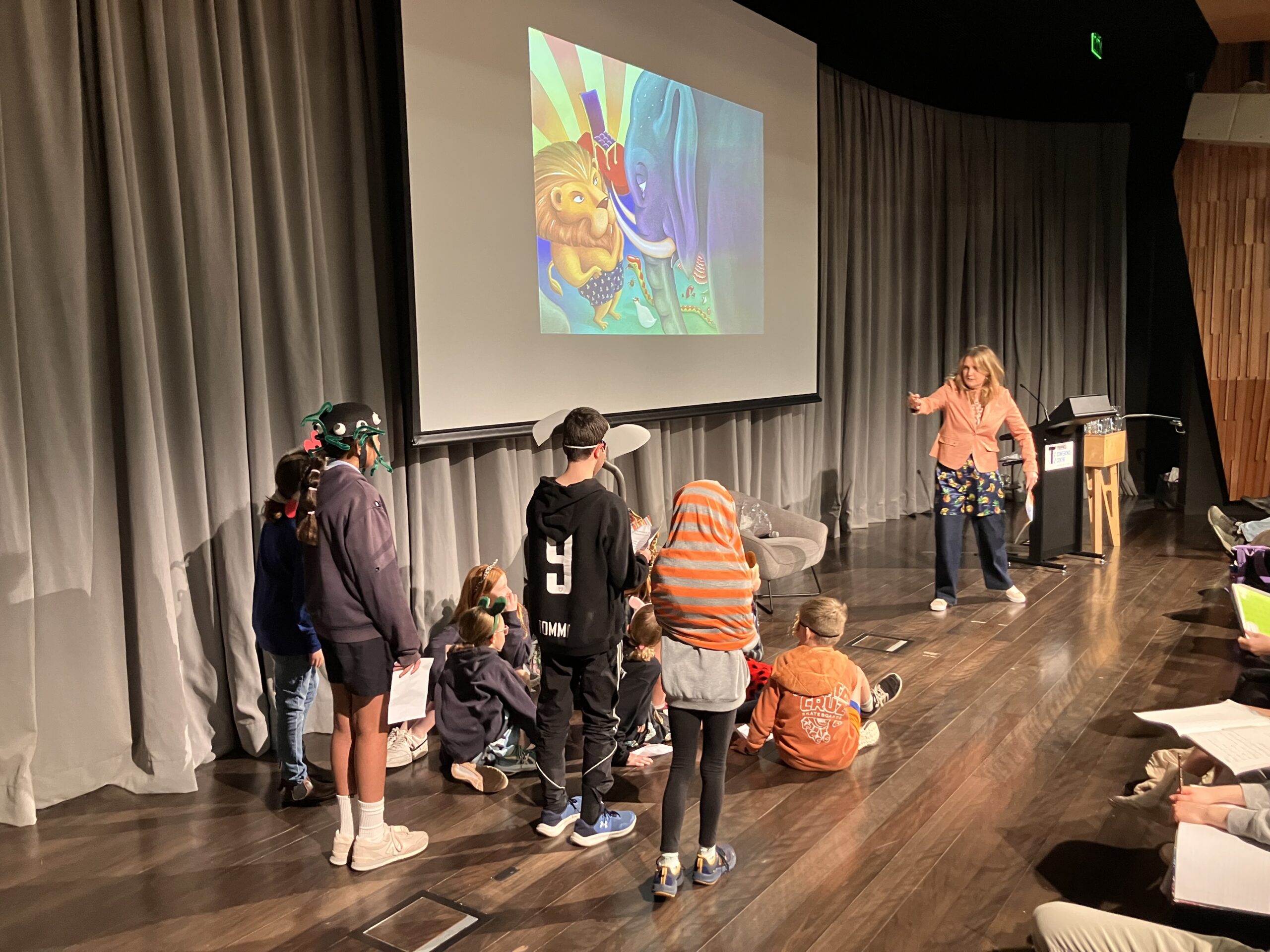
An outstanding example of how to really make the Lightning Talks format work was Steve Mushin. His book Ultra Wild (which went on to win the Elsie Locke Award for Non-Fiction at the awards ceremony that evening) is a lushly illustrated, wildly creative “plan” for bringing wilderness back to the world’s cities. Mushin spent seven years researching and creating the book, talking to scientists, engineers and designers to ensure that his ideas were both idealistic and realistic ways to tackle the climate crisis. And yet in less than fifteen minutes he managed to explain the essence of his book, give a little insight into his own creative process, share some photos with the audience, and answer a wide range of audience questions with eloquence and confidence. He was engaging and inspiring. At the end of his talk I felt both satisfied by the amount I’d learnt about him and rewilding, but also desperate to find out more (and read the book). I’m sure many of the children and young adults in the audience felt the same.
Smaller rooms were used for workshops and longer-form talks. The “Behind The Book” sessions allowed authors to delve deeper into the themes and background to their works. Stacy Gregg, winner of Margaret Mahy Book of the Year (though she didn’t know it at the time), was able to delve into her whakapapa (she is the great-great-great granddaughter of Te Wherowhero, the inaugural Māori king) and her childhood in Ngāruawāhia, where her book Nine Girls is set. She also got groups of children to move around the room as eels, read an excerpt from Nine Girls, and taught the assembled students how to spell Ngāruawāhia: a lot to pack into the 35-minute session.
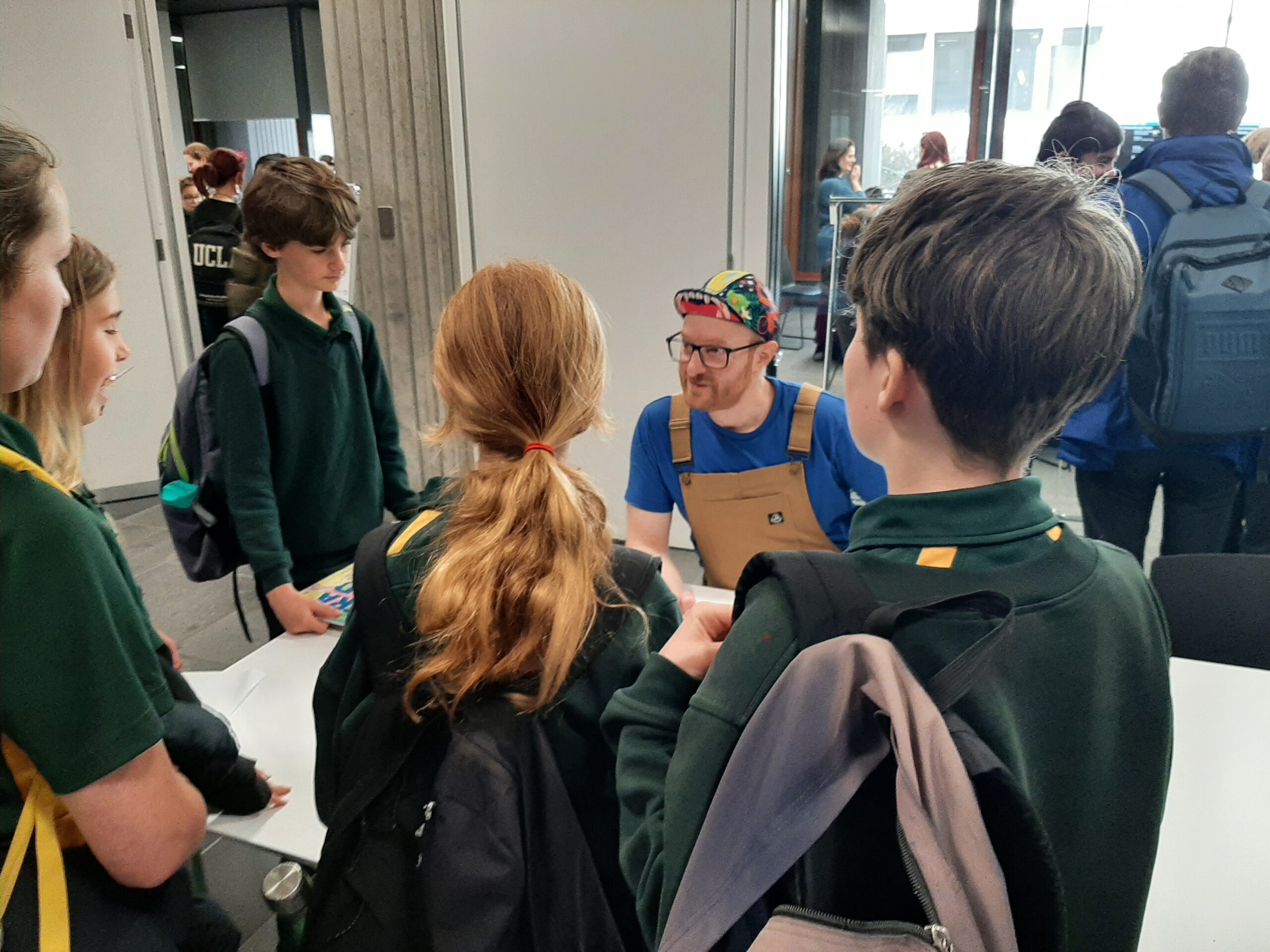
A gratifying part of Books Alive (and indeed of the awards ceremony later that evening) was how te ao Māori was a natural and organic part of the day. Stacy Gregg began her Behind the Book session with a karakia, and then invited Amesbury School to give a waiata. Despite being a bit whakamā to begin with, this group of students presented an impressive waiata, led entirely by each other, in a wonderful communal moment of sharing and expression. The expectation that students can perform a waiata with no direction or help from adults, in response to a request from an author, is to me a positive sign of where we are at as a nation. In a completely different context, Michaela Keeble told the audience in her Lightning Talk that “a book doesn’t have to be by one person, it can be by lots of people.” This is a real departure from the typical view that a book is a one-person job, or two people if an illustrator is involved. The idea of a book as a group project, a communal undertaking, feels much more in keeping with the concept of interconnectedness and kotahitanga, and is one that I think could become more entrenched if people promote it as a genuine option. Still others made mihi to tangata whenua, acknowledged Te Ao Māori, and spoke in te reo Māori in ways that felt integrated rather than superficial or perfunctory. What a joy to feel that we are stepping closer, even if slowly, to a society in which the Treaty is embodied in the way we go about our lives, and that the young people attending days like these are seeing that normalised.
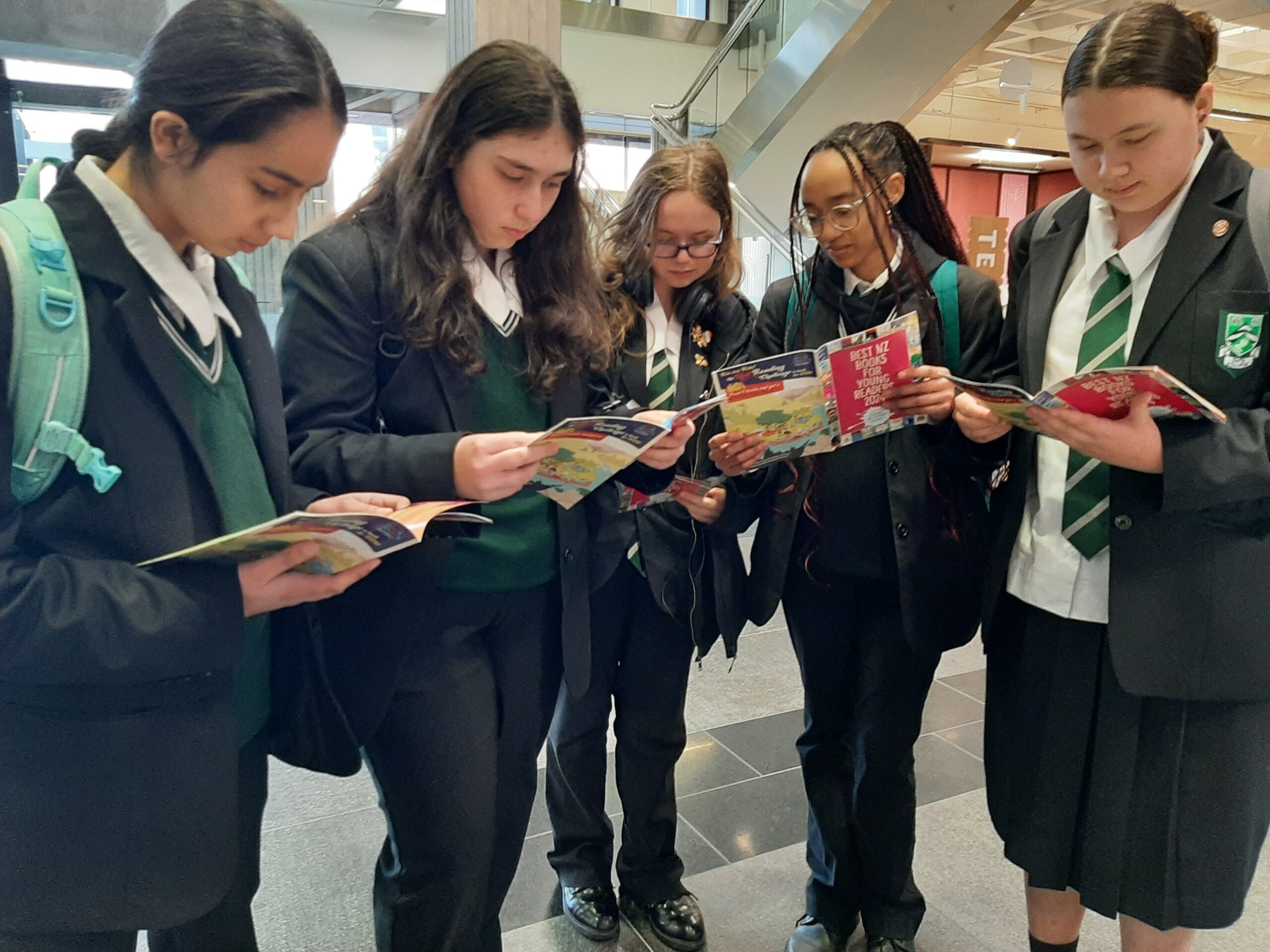
It feels only right to end on that note. Books Alive is made possible by a grant from the Mātātuhi Foundation to the New Zealand Book Awards Trust Te Ohu Tiaka i Te Rau Hiranga. The foundation describes Books Alive as “designed to drive a sense of belonging and relevance around books and reading for our tamariki and rangatahi”. If a world in which illustrators, authors and children (and a few adults too!) are brought together to celebrate children’s books, and if that celebration takes part in a context which is beginning to honour te ao Māori as an inherent, accepted part of te ao pukapuka—well, I don’t think the Mātātuhi Foundation could find any reason not to celebrate what their funding has achieved. May we continue to see Books Alive in the future, and hopefully in other centres around ngā motu.
Annelies Judson
Annelies Judson writes book reviews and poetry for children, among other things. Her many loves include cooking, cricket, science and the em-dash. She can be found on Twitter/X and BlueSky @babybookdel and on Instagram @annelies_judson_writer. She also has a Substack newsletter starting February 2025, @anneliesjudsonwriter.




